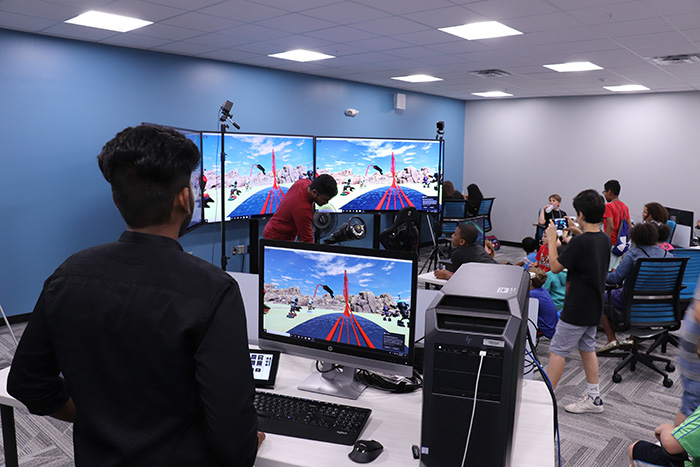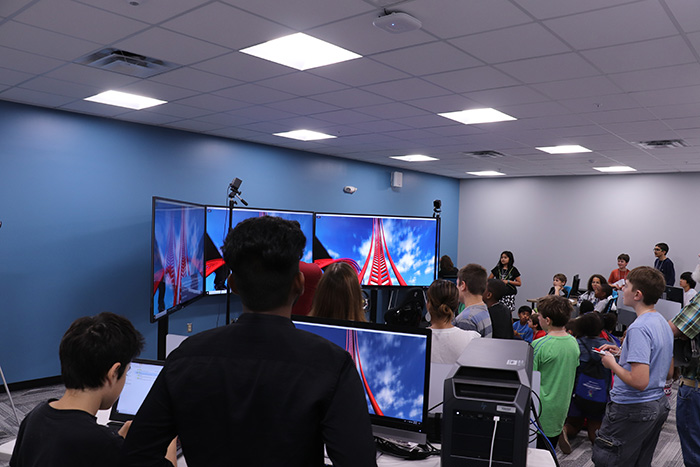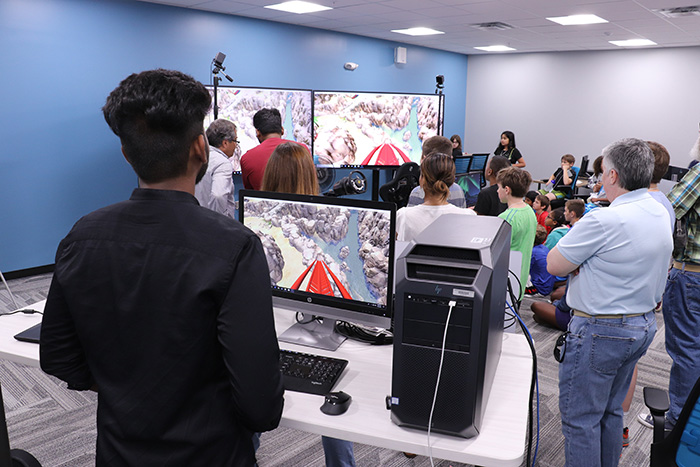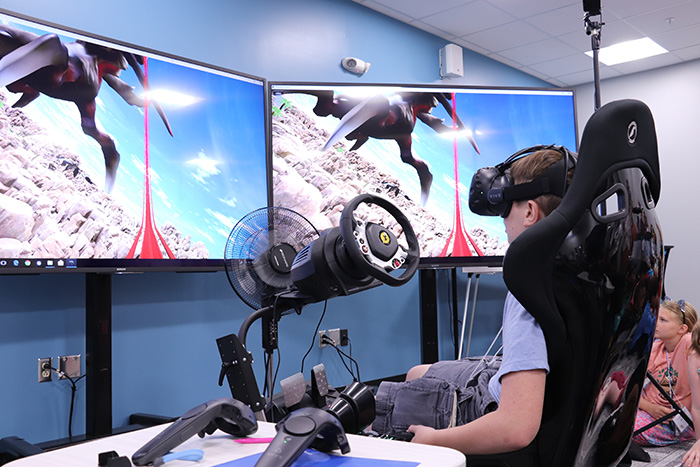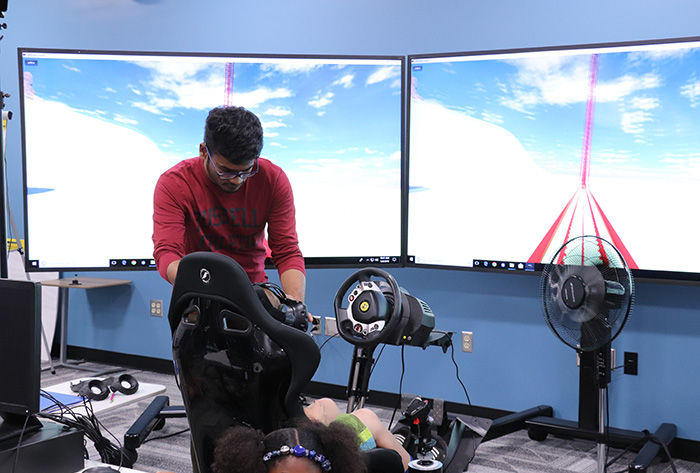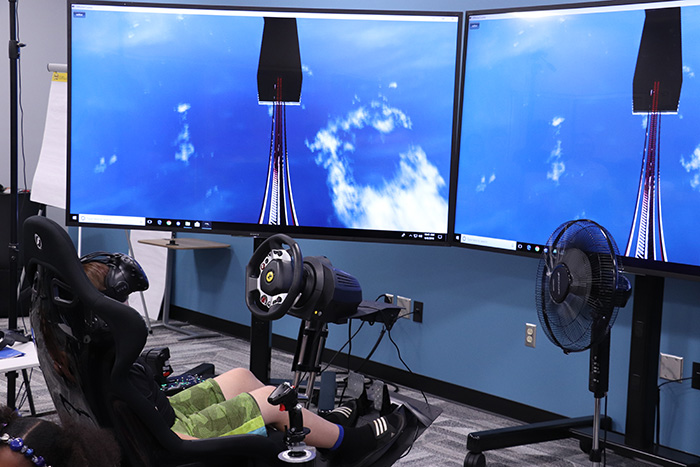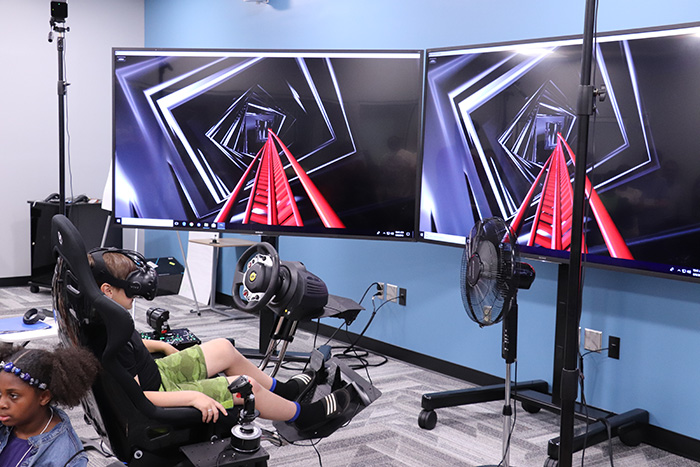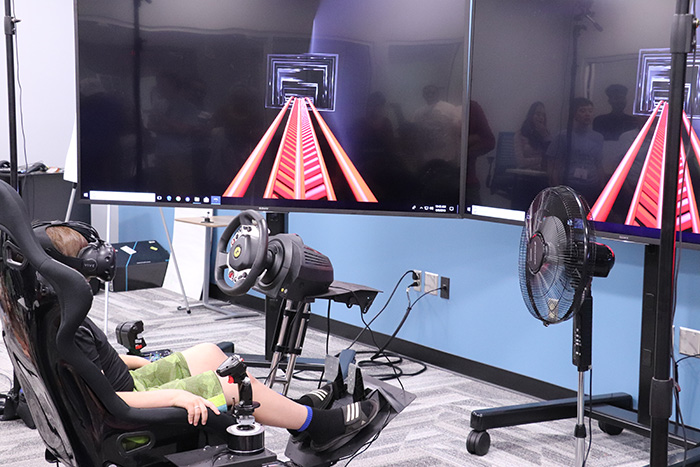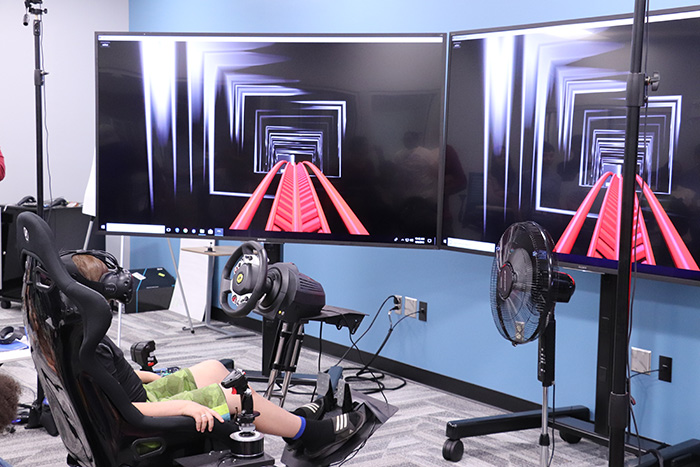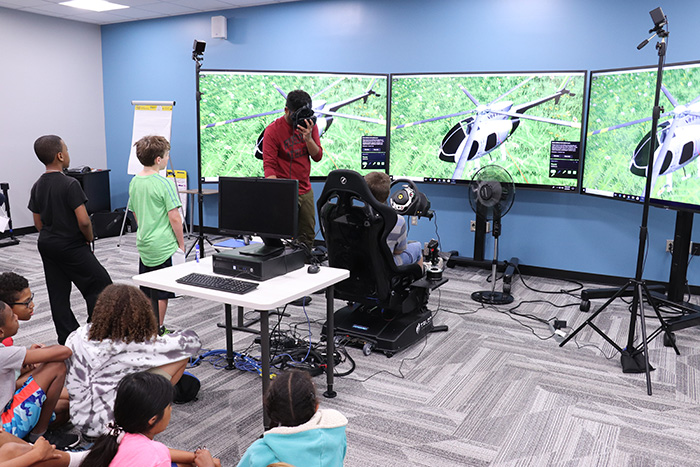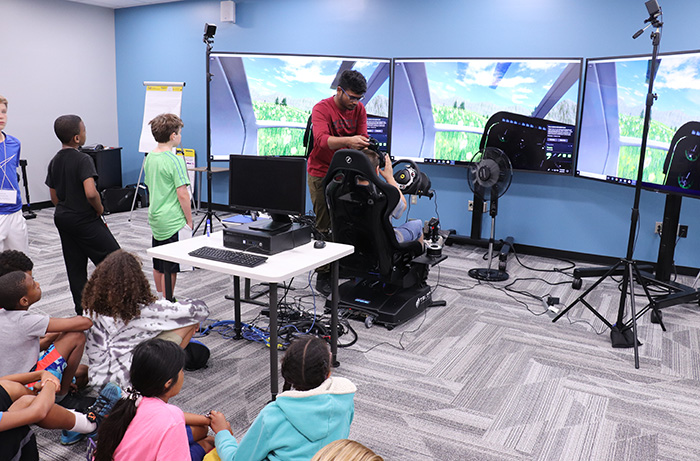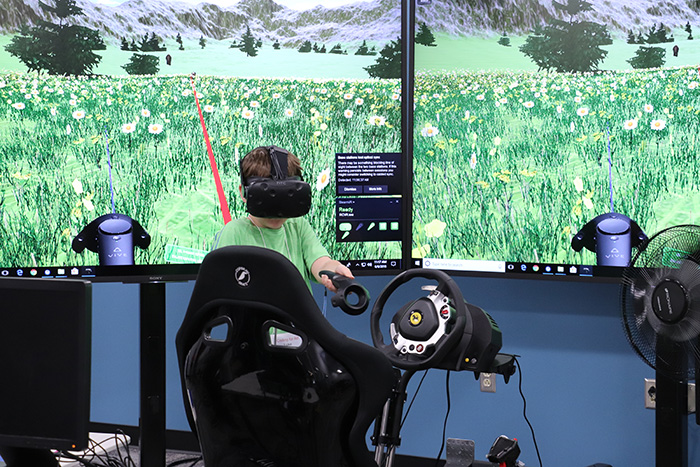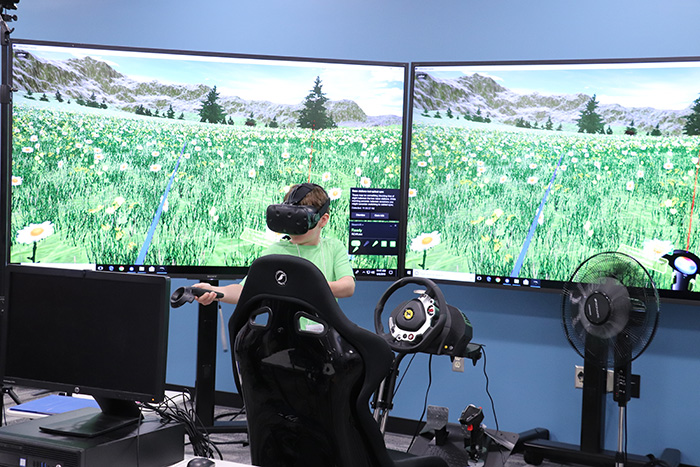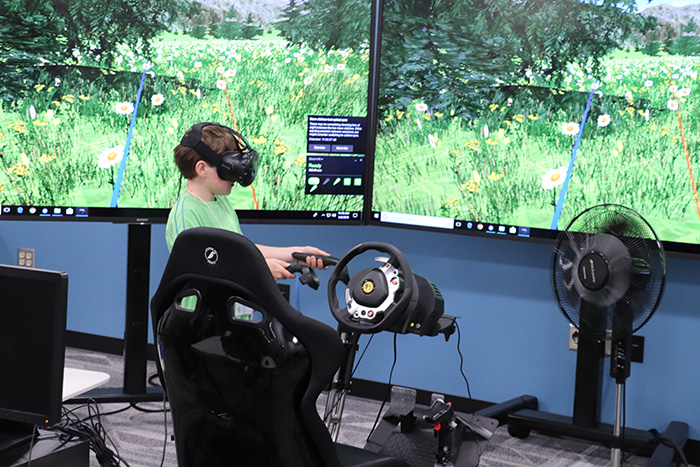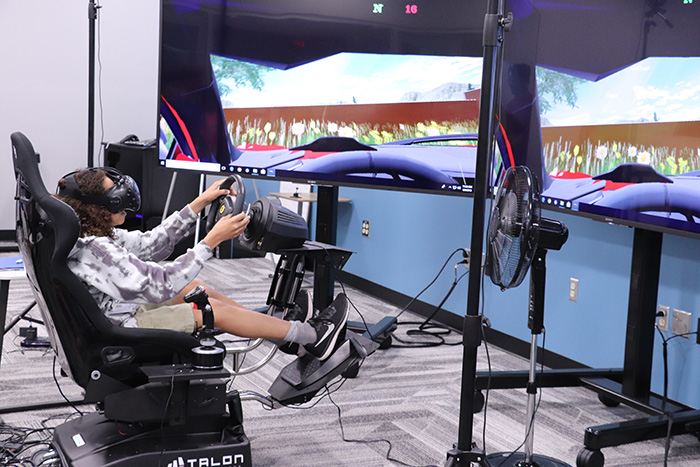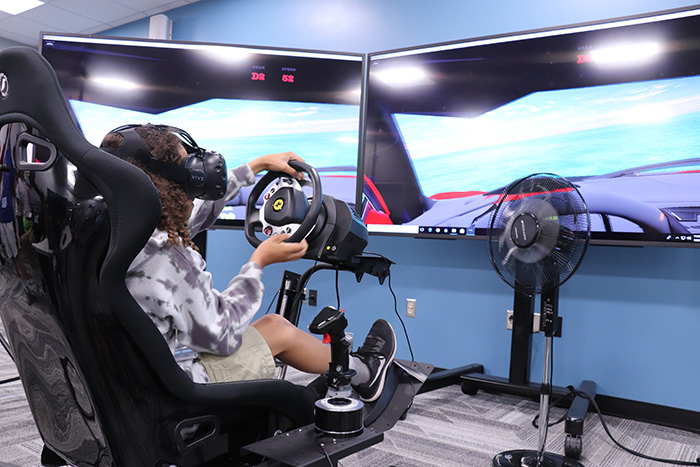College of Arts and Sciences Newsroom
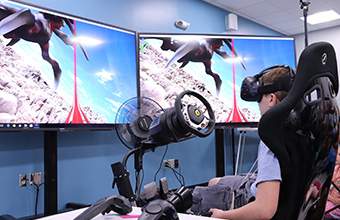
Coding for All
Roller coaster loop-the-loops met functional loop statements at a University of Dayton summer coding camp that made learning the basics of computer programming fun and engaging for local middle school students.
The Department of Computer Science hosted its first “Coding for All” camp in June on campus. The one-week camp attracted more than 50 students in grades 5-8, who learned coding and problem-solving skills by writing simple programs that they could then experience in a 3-D virtual reality environment.
Working in pairs, the students designed projects such as a roller coaster track, a car track with barriers or a tropical island that could be explored by helicopter. On the final day, they interacted with their designs — riding the roller coaster, driving the car or piloting the helicopter using a virtual reality headset and motorized chair in the department’s new virtual reality lab in the former Music and Theatre building on campus.
“It was extremely fun,” said Connor Havig, age 13, an eighth grader at Van Buren Middle School in Kettering, Ohio. “I got to meet new people and learn cool things about coding, like array, for loops and flowcharts. It was kind of challenging at first, but eventually it got easier.”
Connor gripped the arms of the virtual reality motion chair tightly as he “rode” his wildly twisting roller coaster during a project presentation session for parents.
“We’ve been very happy with the results,” said his mother, Rhonda Havig, a web content specialist in University Advancement Services. “He has been coming home excited every day. Even while he’s not in the camp, he has been thinking of ways that he can improve his program. He’s really enjoyed it and gotten a lot out of it.”
Unlike writing complex computer code, students stacked simple assignment and control statements to define the length, angle and direction of each section of roller coaster track. They could see the track being created with each new statement, which helped them learn how to flowchart a sequence of events.
In 2017, the computer science department hosted a one-day coding session for fifth graders, using a basic virtual reality system. The camp expanded that program to five days, with separate morning and afternoon groups, who used an advanced VR system that included multiple display screens, sensors and the motion chair.
“The idea is to make coding fun for 9- to 13-year-olds using a virtual reality environment,” said Mehdi Zargham, professor and computer science department chair. “I’ve not seen this concept anywhere else, but it seems like it’s working. It shows that VR really enhances their learning ability by seeing their output and making it more interesting for them. If we can achieve this much in a week, think about how much can be done in a couple of months.
Zargham, who developed the programming in a virtual environment tool with several graduate students, including Kishore Danduri and Manibharathi Rajendran, intends to apply for federal grant funding to engage more young students in computer science, using this year’s camp as a case study.
“This is just the beginning,” he said. “It can grow really fast if we have resources.”
Brochures promoting the coding camp were distributed this spring at Dayton-area schools. The camp reached capacity two weeks after registration opened.
To make the camp available to all students, the department offered scholarships to those whose families couldn’t afford the $100 fee. Student fees funded three graduate and four undergraduate students, who mentored the camp participants.
Anna Duricy, a senior computer science major from Youngstown, Ohio, enjoyed seeing how quickly the middle schoolers learned coding skills during camp.
Duricy taught herself to code from a book when she was about their age. She said the first program she wrote — which converted Fahrenheit to Celsius — probably wouldn’t excite a fifth grader today.
“Making this roller coaster, they can see the things they create, and they are excited and want to do this,” she said.
In post-camp surveys, most students listed programming a roller coaster and riding it in VR as the most attractive and memorable aspects of the experience.
“It was fun, exciting and educational,” one student wrote. “I want to come to camp next year and maybe even pursue computer science as a career.”
- Dave Larsen, communication coordinator, College of Arts and Sciences

